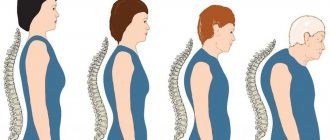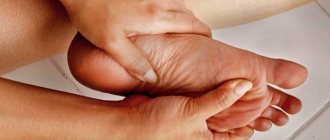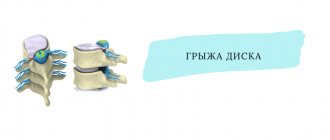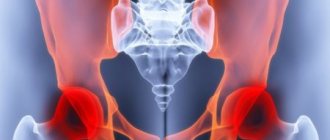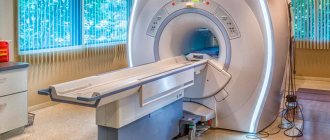There are traditionally many calls with complaints that the sciatic nerve has caught a cold during the cold season. But things are not always exactly as patients assume. They think that severe pain and limited mobility are the result of exposure to negative temperatures. Actually this is not true.
The sciatic nerve is the thickest in the human body. It is formed by several branches of the lumbar radicular nerves. It leaves the lumbosacral nerve plexus and goes to the entrance to the tunnel formed by the piriformis muscle. Not only the sciatic nerve passes inside it, but also large blood vessels. As you understand, this structure perfectly protects the nerve fiber from hypothermia even in severe frost.
In order to freeze the sciatic nerve, frostbite of the piriformis muscle must occur. Although there are exceptions. The small section along which the sciatic nerve follows from the exit from the lumbosacral nerve plexus to the entrance to the piriformis muscle does not have the same reliable thermal insulation. But again, in order to catch a cold, you need to be in the cold for several hours without clothes, excuse me, with a bare tailbone.
Therefore, it is necessary to understand that a cold sciatic nerve is most often a complication of another, long-term disease. For example, degenerative dystrophic destruction of intervertebral discs or deformation of the iliosacral joint of bones. Also, a similar clinical picture can be caused by plexitis, intervertebral hernia, instability of the position of vertebral bodies, spondyloarthrosis, changes in posture and a number of other serious pathologies of the spinal column and surrounding tissues.
In this article we will look at questions about what to do if the sciatic nerve is cold, what symptoms may occur and what treatment should be carried out to completely restore this part of the autonomic nervous system.
If you have pain along the sciatic nerve and you are in Moscow, then make a free appointment with a neurologist at our manual therapy clinic right now. An experienced doctor will conduct a full examination, make an accurate diagnosis and tell you how to properly carry out complex treatment. You will receive individual recommendations that will help you undergo examination and cope with the disease.
What does a cold sciatic nerve mean?
We have already discussed above that the sciatic nerve consists of many branches of the lumbar roots. It forms in the nerve plexus. Then it passes through the piriformis muscle and along the back of the thigh (between the muscles) down into the popliteal fossa. Bifurcation occurs in it - division into the tibial and peroneal branches. The nerve then runs along the side of the leg to the ankle joint. Partially innervates the tissues of the foot.
Throughout the entire path of the sciatic nerve, it can be negatively affected. And it is precisely these pathologies that are evidenced by inflammation of the sciatic nerve, which the patient subjectively regards as a cold spot.
What actually happens when exposed to cold as a strong stress factor:
- in the lumbar region, in the thickness of the skin, a reflex reaction begins - narrowing of blood vessels, thus carrying out primary thermoregulation;
- when the intensity of blood microcirculation decreases, a dehydration reaction of the intervertebral discs begins;
- they temporarily lose elasticity and do not protect the radicular nerves and their branches from compression by neighboring vertebral bodies (this occurs only in those patients who have had osteochondrosis of the lumbosacral spine for a long time; in healthy people this reaction is not observed);
- when compressed, the radicular nerves become inflamed, which creates unfavorable conditions for the sciatic nerve - this reaction also affects it;
- then, as it progresses, infiltrative swelling begins to develop, which can cause sciatica and piriformis syndrome;
- the patient experiences a burning pain, which is intensified by lumbago when moving;
- Neurological signs gradually appear.
With plexitis, similar pathological changes occur. But there is also an ascending type of damage to the sciatic nerve. Pinching is observed in the popliteal fossa. If a person often likes to sit with one leg crossed over the other, then gradual degeneration of the nerve fiber occurs. The surrounding tissues become thinner, most often due to insufficient innervation. Therefore, when the knee area is overcooled, an aggravation occurs and it seems that the sciatic nerve has caught a cold. In fact, everything is a little different.
When the area behind the knee is exposed to cold, an emergency constriction of the blood vessels begins. The blood flow practically stops, as evidenced by the pallor and even cyanosis of the outer skin. Against the background of a decrease in the intensity of capillary blood flow, ischemic reactions begin to occur in the structure of the nerve fiber. This is what causes quite a lot of pain.
It can spread upward and downward. With ascending irradiation, pain can spread along the back of the thigh to the buttock and lumbar spine. In this case, diagnostic functional tests help make the diagnosis.
Another common disease in which similar unpleasant symptoms can occur under the influence of negative temperatures is piriformis syndrome. As mentioned above, there is a tunnel inside it. It ensures the passage of the sciatic nerve from the lumbar iliac region to the trochanter of the hip joint. When exposed to cold, a sharp spasm of the piriformis muscle is possible.
At the same time, the compression pressure on the sciatic nerve and accompanying blood vessels increases sharply. An ischemic and inflammatory reaction begins. This is accompanied by acute pain, lumbago, limited mobility, a feeling of stiffness and other symptoms.
As you can see, the situation is not always as clear as the patient imagines. In principle, there is no such thing in medical terminology as a cold sciatic nerve. There are diseases in which this structure becomes inflamed, subject to ischemia or compression. As a result, sciatica develops - inflammation of the sciatic nerve. And already this standing is assessed by the patient subjectively as a cold nerve. But, as you understand, in such a situation a thorough differential diagnosis is necessary. The success of the treatment depends on how accurately the diagnosis is made. Do you agree that it is difficult to expect a positive result from the treatment of piriformis syndrome if the real cause of the pain is located in the popliteal fossa?
Accordingly, the first thing to do if it seems that the sciatic nerve has caught a cold is to contact an experienced neurologist. You can also visit a vertebrologist or orthopedist. We do not recommend visiting your local physician for such problems. This doctor does not have sufficient professional competence to make an accurate diagnosis and develop an effective course of treatment.
In most cases, with such requests, the local physician establishes a diagnosis of lumbosacral osteochondrosis, standard for such a situation. Prescribes non-steroidal anti-inflammatory drugs and chondroprotectors. After 10–14 days, the patient is discharged to work. And the disease he has is only suppressed temporarily and continues to develop.
Therefore, the first thing to do if the sciatic nerve has caught a cold is to look for an experienced neurologist or vertebrologist. This specialist will provide real professional assistance, and will not provide symptomatic treatment with the goal of discharging you to work as quickly as possible.
Prevention¹
Physical activity should be limited: heavy lifting or carrying heavy bags is not recommended. Prolonged static loads (sitting or staying in an uncomfortable position) are also contraindicated. It is important to avoid hypothermia as this is one of the risk factors for sciatica.
Pregnant women should avoid shoes with heels and purchase an orthopedic mattress. Banding and physical therapy are also advisable (a set of exercises is agreed individually with a physiotherapist).
Moderate physical activity is recommended: walking, physical therapy, swimming. It is important not to abuse alcohol and medications, as they provoke intoxication of the body, and this is one of the reasons for the development of lumbosacral radiculopathy.
Symptoms - how to understand that the sciatic nerve has a cold
Many patients ask how to understand that the sciatic nerve has caught a cold - what characteristic signs should be paid attention to. The first thing worth noting is that there is no concept of a cold nerve. It may be inflamed, compressed, subject to ischemia or traumatic exposure. Therefore, it is important to first find out what impact occurred and what consequences it led to.
Clinical symptoms may include the following:
- acute pain localized in the lumbar region, spreading along the nerve (along the back of the thigh, then along the lateral surfaces of the lower leg);
- lumbago when performing movements (if when moving the leg to the side in a standing position, then most likely it is piriformis syndrome, when trying to bend over - with osteochondrosis, when bending and extending the leg at the knee - with tunnel syndrome in the popliteal fossa);
- numbness in certain areas for the innervation of which the affected nerve fiber is responsible;
- change in the color of the skin surfaces (hyperemia at the site of inflammation, pallor in those places where there is a secondary disturbance of innervation or a spasm of the capillary bloodstream has occurred);
- a feeling of stiffness that does not go away throughout the day.
If the sciatic nerve has caught a cold, symptoms may appear immediately or gradually, increasing in intensity over the first 3 days. Then adaptation mechanisms kick in and the pain begins to subside even in the absence of adequate treatment. Unfortunately, this process is very often associated with the death of sciatic nerve cells. It will be very difficult to restore them in the future. Therefore, very often, patients who do not pay attention to such pathologies develop various neuropathies, vascular pathologies, impaired muscle performance, etc.
Diagnosis begins with a full examination by a neurologist. Using functional diagnostic tests, he detects the area along which the sciatic nerve is negatively affected. Then, depending on the data of the initial examination, an X-ray examination of the lumbosacral spine, piriformis muscle, hip joint, and knee joint is prescribed. MRI allows you to assess the condition of soft tissues. This examination allows us to exclude the possibility of intervertebral hernia, piriformis syndrome, popliteal tunnel syndrome, etc.
To assess the performance of the nerve fiber, electroneurography is performed. The method allows you to assess the degree of damage to the sciatic nerve and determine exactly the area that has been damaged.
Causes of sciatica
The immediate cause of sciatica is irritation or pinching of the sciatic nerve or the nerve roots that form it. But the reasons for this irritation can be different.
The most common cause of sciatica is a herniated disc, which compresses the sciatic nerve roots. Also, irritation of the nerve roots can be caused by osteophytes - bone formations on the joints of the spine that occur with osteochondrosis or spondyloarthrosis.
Spondylolisthesis (displacement of one vertebra relative to another), as well as inflammation and spasm of the lumbar or gluteal muscles (usually the piriformis muscle) can lead to pinching or compression of the nerve roots that form the sciatic nerve.
Attacks of sciatica can also be caused by injuries (including birth), tumors, internal bleeding, diabetes, infectious or gynecological diseases. Therefore, if the symptoms of sciatica are acute or bother you for a long time, you need to consult a doctor and undergo an examination in order to correctly diagnose the disease.
How to treat if the sciatic nerve is cold
If the sciatic nerve is cold, treatment should begin with differential diagnosis. There is no such disease as a cold nerve. There is a pathology in which a number of corresponding clinical symptoms arise. This disease needs to be treated. Otherwise, no positive change will be achieved.
So, after the disease is identified, the doctor develops an individual course of therapy. For example, if a patient has a decrease in the height of the intervertebral discs and, as a result, compression pressure is exerted on the roots responsible for the formation of the sciatic nerve, then he is offered spinal traction. Manual traction of the spinal column allows you to quickly relieve pressure from the radicular nerves and their branches. The patient experiences relief from his condition. And then it is already possible to carry out complex treatment aimed at restoring damaged intervertebral discs.
Before treating a cold sciatic nerve due to piriformis muscle syndrome, it is necessary to relieve its spasm. For this purpose, it is advisable to use osteopathy and kinesiotherapy. Using acupressure, the doctor achieves relaxation of the muscle fiber. Osteopathy allows you to start disrupted processes of microcirculation of blood and lymphatic fluid. This creates conditions for rapid tissue regeneration inside the piriformis muscle. Reflexology, physiotherapy, exercise therapy and massage are then used.
If you need effective and safe treatment of the sciatic nerve, then we invite you to a free consultation with a neurologist at our manual therapy clinic in Moscow.
Classification of painkillers
https://youtube.com/watch?v=tbi1K2_q3Rc
Treatment of sciatica at home is permitted if home therapy is carried out in the form of prevention. The patient is discharged from the medical institution if the main foci of the affected tissue are restored and the pain is practically not bothered. Drug exposure can already be significantly reduced.
Compresses
- Boil a mixture of nettle leaves, black currants, and burdock root in half a liter of sunflower oil, add one hundred grams of salt and use for compresses.
- Apply a cabbage leaf scalded with boiling water as a compress.
- Mix turpentine with water 1:2 and apply gauze soaked in the mixture to the body for a quarter of an hour.
Applications
- Heat natural beeswax in the microwave or in a water bath until it becomes soft. Quickly form a plate out of it, place it on the painful area, cover it, and insulate it overnight.
- Form a flat cake from dough mixed with flour and liquid honey. Use as wax.
- Grate potatoes, about 500 g, drain the water, pour a tablespoon of kerosene into the cake. Place between two gauze and place on your back, first lubricating the skin with oil.
Rubbing
- Prepare an infusion of vodka (300 g) and white acacia (100 g of dried flowers) for a week. Then rub into painful points. Instead of acacia, you can use white Persian lilac.
- Mix black radish juice with honey 3:1 and rub on sore areas.
- Infuse fresh (not dried) bay leaves (20 leaves) in a glass of vodka for three days.
- Herbal decoction: calendula, chamomile, fir oil. The water should not be hot, the duration of the bath should be a third of an hour.
- Grind raw horseradish root and place in a gauze bag. Place in a bath filled with water (one bath – 100 g of horseradish). Stay in the water for no longer than 5 minutes.
- Place a kilogram of young pine shoots in three liters of boiling water, heat for ten minutes, leave for four hours and pour into the bath. Immerse yourself in it for a quarter of an hour.
Ingestion
- Horse chestnut seeds - a tablespoon, pour half a liter of boiling water, heat for a quarter of an hour (water bath). Take 100 ml cooled before each meal.
- Calendula flowers - a tablespoon per glass of boiling water. Pour and cover (do not cook). Half a glass of cooled, strained infusion is drunk before each meal (no more than four times a day).
- Dried and crushed burdock root is stirred in a glass of Cahors wine and heated over low heat for five minutes. This dose is taken in two doses, before breakfast and before dinner.
Diagnostics
The diagnosis is made by a neuropathologist through an initial examination and questioning of the patient, collecting an anamnesis. To complete the picture of the disease, an x-ray is taken (it allows the specialist to determine osteochondrosis, pinching), computed tomography and magnetic resonance imaging (to exclude or confirm the presence of cancer cells, tumors, intervertebral hernias), ultrasound examination (the pelvic organs are examined to identify the root cause that provoked illness).
Ointments and gel
To eliminate moderate pain, external agents are used, in particular ointments and gels, as they have a low level of side effects. According to their composition, they are divided into:
- anti-inflammatory;
- complex action;
- chondroprotectors;
- homeopathic.
Anti-inflammatory ointments include products that contain non-steroidal drugs. In particular, Ketoprofen, Fenal, Indomethacin, Nurofen relieve pain well. Capsicam, Finalgon, Viprosal, and turpentine ointment have a warming and analgesic effect. To achieve a better result, after applying the ointment, you need to wrap the sore spot in a woolen scarf.
For sciatica, chondroprotective ointments are used, since they contain chondroitin, which promotes the rapid restoration of connective tissue and the production of the required joint fluid. They also have an analgesic effect and help eliminate inflammation.
Homeopathic ointments contain substances and medicinal plants that help reduce the intensity of the inflammatory process and relieve pain. Such products include Sabelnik, Zhivokost, ointments containing bee venom.
Such medications must be used very carefully, as there is a high probability of allergies.
Prevention of sciatica
Measures to prevent the development of colds and inflammation of the sciatic nerve include:
- prevention of viral and infectious diseases, their timely and competent treatment;
- strengthening the muscles in the back;
- avoiding severe hypothermia of the lumbar area and legs;
- hardening;
- healthy lifestyle;
- regular sports and physical exercise;
- walks in the open air.
You should also strengthen the body through proper nutrition (with sufficient consumption of natural foods, vegetables and fruits), and multivitamin complexes.
Ointments that improve blood circulation and warm
Ointment for inflammation caused by long exposure to cold or stress will help relieve compression of the nerve processes (decompression). The active components of such drugs can be both natural components and synthetic substances. These include:
Apizartron
Active ingredients: main component bee venom, methyl salicylate. Release form: aluminum tube, 20 and 50 grams. The color is white or slightly yellowish.
Capsicam
Active ingredients: racemic camphor, turpentine oil, dimethyl sulfoxide and others. Release form: tubes of 30, 50 grams with an applicator. White or yellowish in color, with the smell of camphor.
Efkamon
Main active ingredients: tincture of capsicum, clove oil, eucalyptus oil, camphor and others. Release form: tube of 10, 25 grams. With a yellowish tint and a characteristic odor.
Products are available without prescription. Treatment at home with these remedies is quite effective.
This category of ointments for pinched sciatic nerves includes: Doctor Mom Inhaler, Finalgon, Saliniment and others. Increased blood circulation caused by irritation reduces pain. The effect is enhanced by wrapping or using a warm compress.
Not recommended for use in children and pregnant women. If there are skin lesions on an area of the body, then such an ointment cannot be used for sciatica. After use, wash your hands thoroughly with soap.
